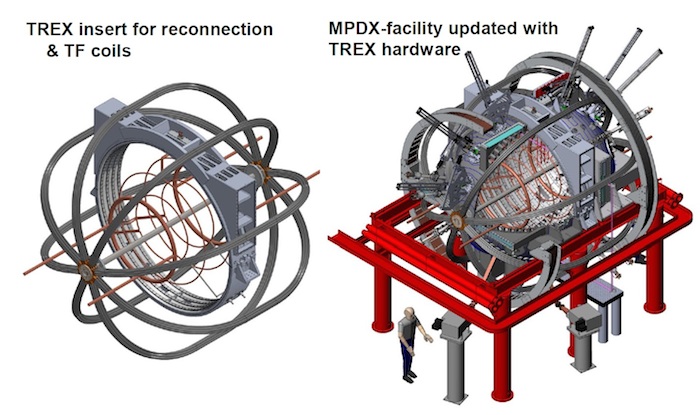
Toroidal field coils and a cylindrical insert holding additional coils for driving reconnection (left) will be inserted into the MPDX-facility. The large external Helmholtz coil seen in the figure is also part of the upgrades to the experimental facility (right).
Magnetic reconnection is a fundamental process in plasmas that converts magnetic energy into particle energy while changing the topology of the magnetic field lines. Although reconnection occurs in microscopic diffusion regions it often governs the macroscopic properties and behavior of the system. For example, reconnection controls the evolution of explosive events such as solar flares, coronal mass ejections and magnetic storms in the Earth’s magnetotail. The latter drive the auroral phenomena. In magnetic fusion devices, magnetic reconnection is responsible for the periodically occurring internal relaxation events (sawtooth reconnection) which can degrade the plasma confinement.
Reconnection has been investigated heavily for several decades, and for experiments to remain relevant in this maturing field of research and help push forward emerging frontiers, new devices are needed which access regimes of fully collisionless plasmas at large spatial scales. To address this need, the Terrestrial Reconnection EXperiment (TREX) is now being constructed within the Physics Department at UW-Madison. Through the use of the 3m diameter spherical vacuum vessel of the Madison Plasma Dynamo eXperiment (MPDX), TREX is spatially the largest dedicated reconnection experiment to date. The new hardware for implementing TREX is shown above.